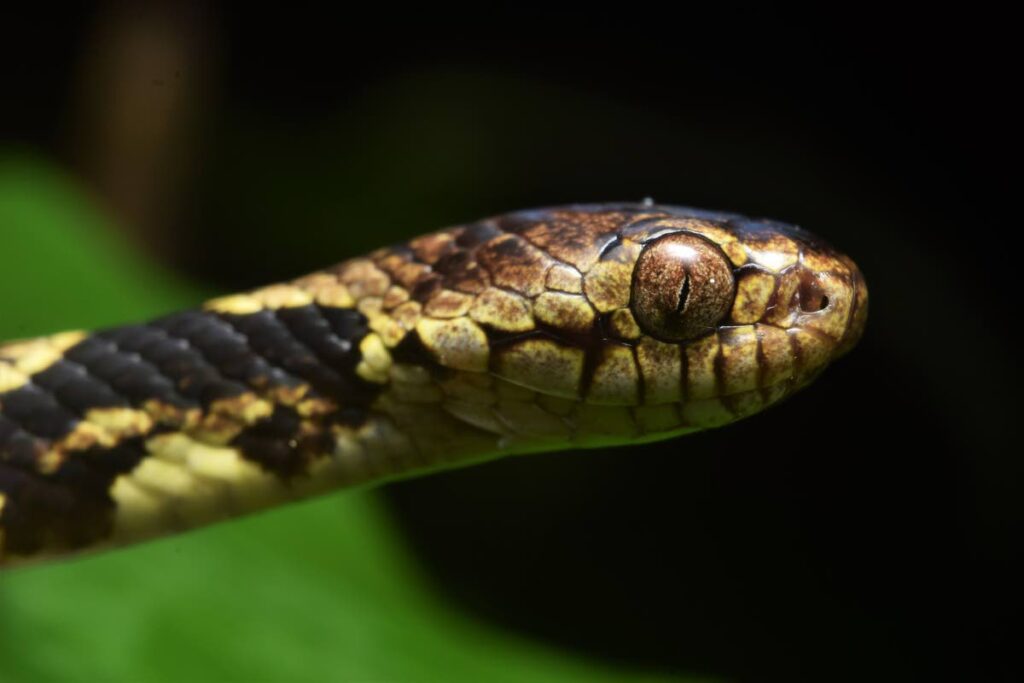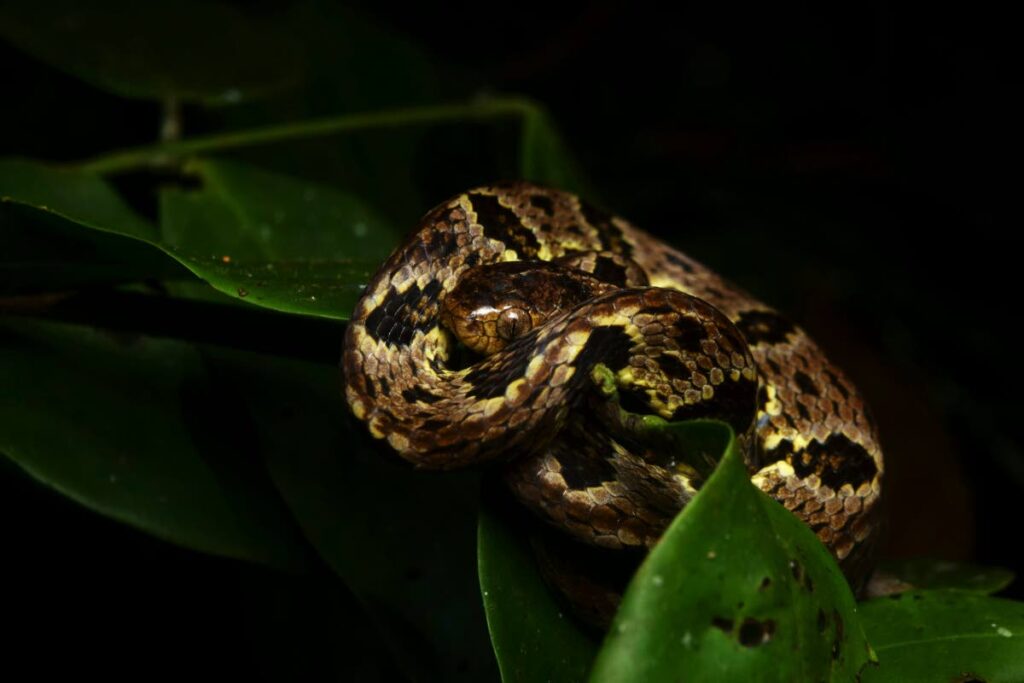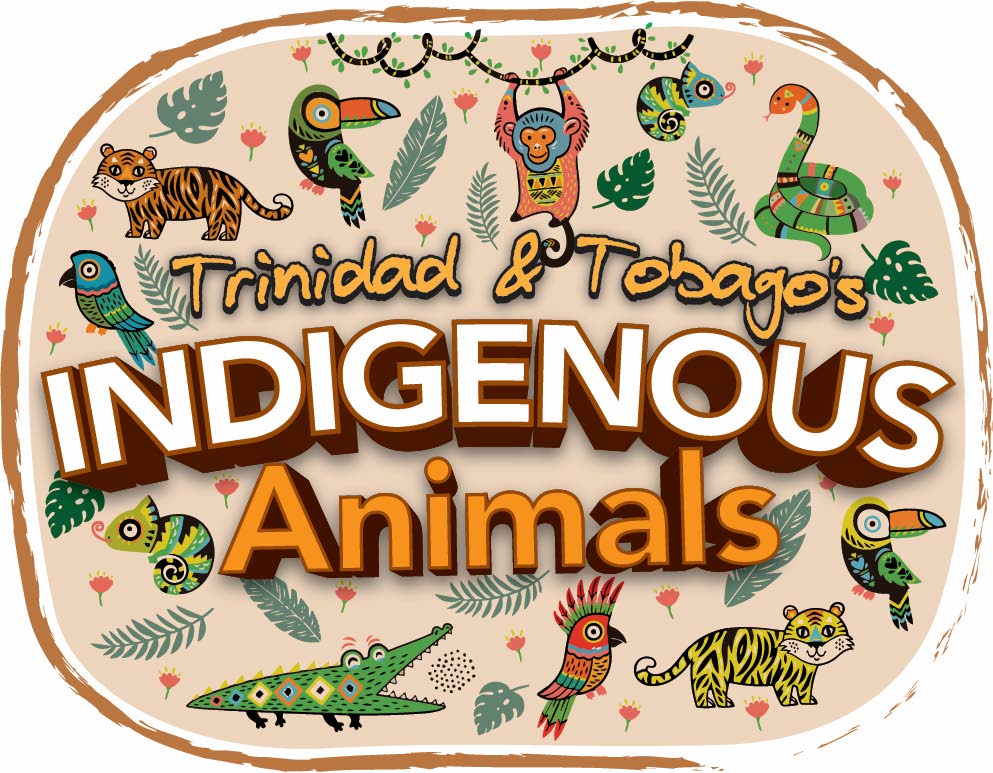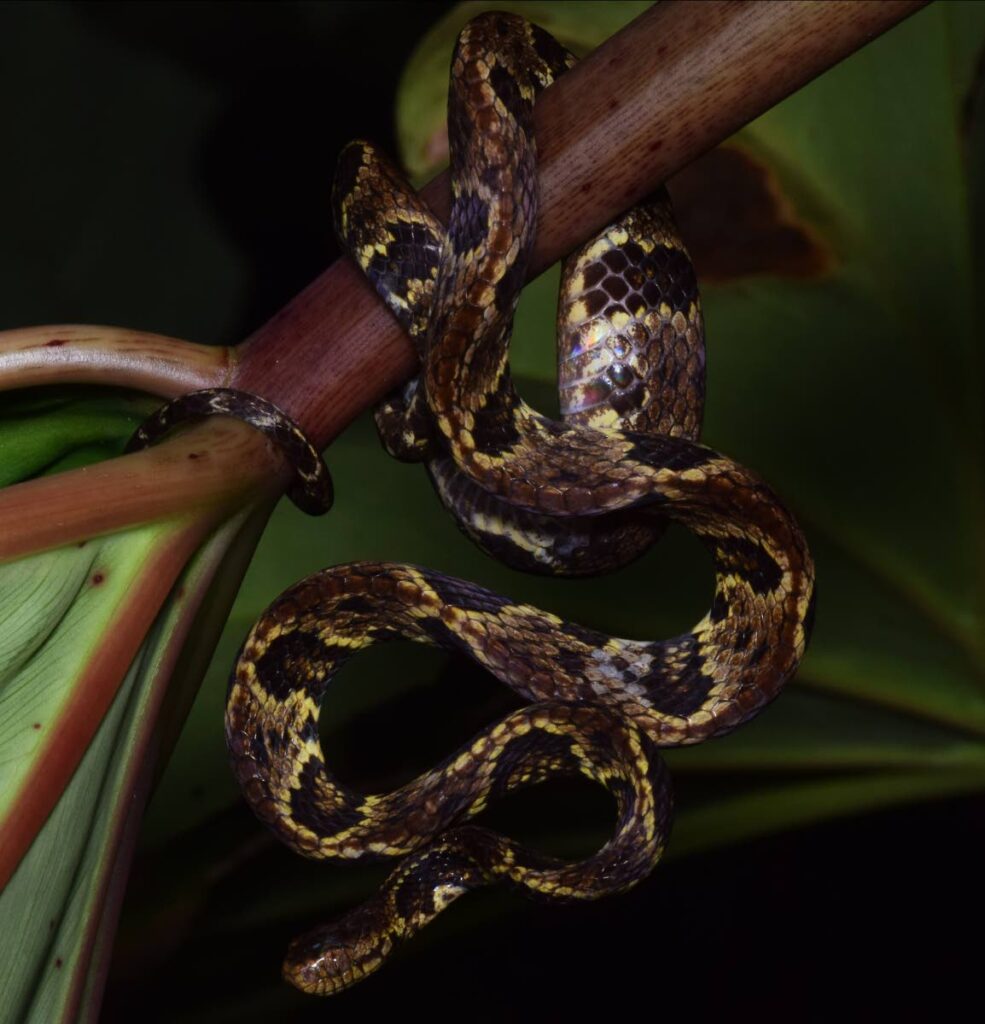The Trinidad snake that only eats snails

When people think about snakes catching prey, it’s not uncommon for them to imagine a mapepire sinking its venomous fangs into a small mammal or a boa constrictor suffocating a large prey to death.
Snakes have wide-ranging diets which differ according to species. However, their diets typically include everything from birds, rats, lizards and small mammals to even other snakes.
But did you know there’s a snake found only in Trinidad which mainly eats snails?

Herpetologist Rainer Deo told Newsday Kids, “The Trinidad snail-eating snake (Dipsas trinitatis) has so far only been recorded on the island of Trinidad, making it an endemic species.
“As its name suggests, this species feeds exclusively on snails.
“However, its diet is restricted to small land snails and not in any freshwater or marine environments.
“The snails they feed on also typically lack an operculum – a hardened structure that seals off and protects the snail when it retreats into its shell.”
When hunting, these snakes use their teeth to extract the snails out of their shells and digest them whole. They do not eat the shells.
Growing up to 75 centimetres in length, these snakes are arboreal which means they spend most of their time in trees and are nocturnal (active at night).
But those are just a few reasons why these snakes are not easily seen.

“Due to their small size and secretive nature, these snail-eating snakes are not seen very frequently.
“They exist in secondary and primary forests and are usually seen near streams.”
These snakes may also be active when it rains as more snails may emerge at that time.
To date, these snakes have mostly been sighted in the Northern and Central ranges with few sightings in south Trinidad.
“The snake is brown, yellow and black and has a pattern that slightly resembles that of the highly venomous mapepire. However, this species itself is not highly venomous.

“They differ from the mapepire in being much smaller. Even a very young mapepire would be thicker than a full-grown snail-eating snake.”
When in danger, these snakes will firstly retreat. As a secondary defence mechanism, they would secrete a foul-scented substance from their cloaca or coil themselves in a position where the head is protected.
Even though they love to eat snails, these snakes, unfortunately, can’t help in the fight against the invasive giant African snail because they are too big to consume.
Deo wants people to learn more about these snakes and protect them since their population distribution is limited.


Comments
"The Trinidad snake that only eats snails"